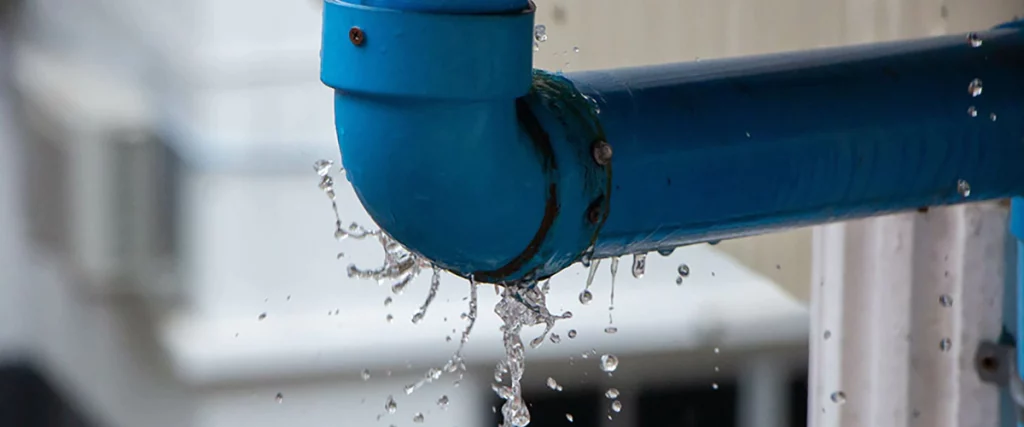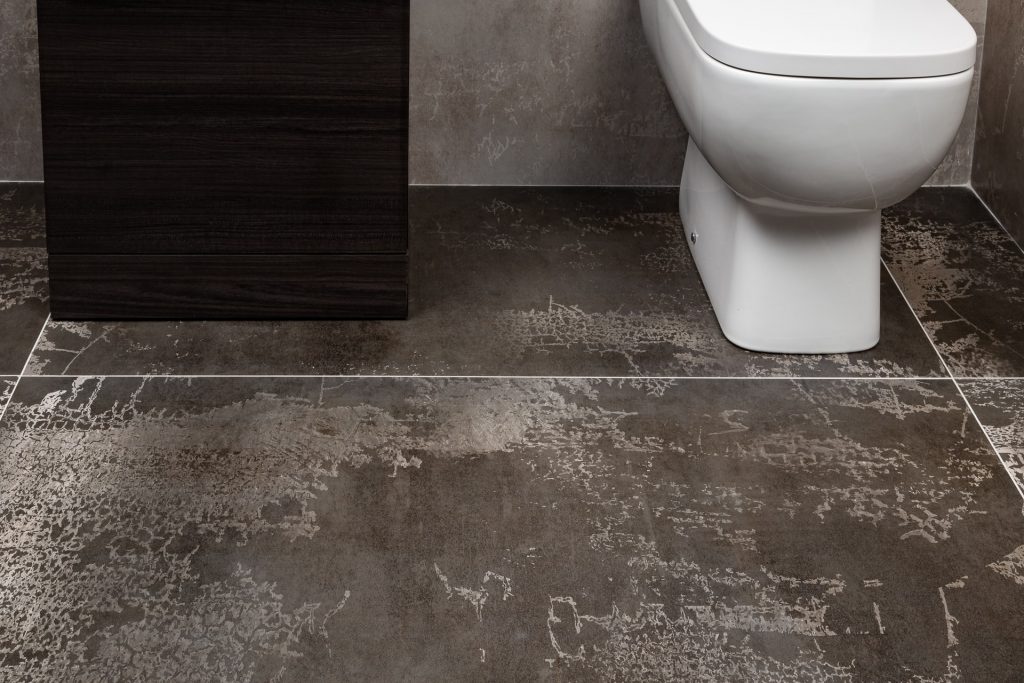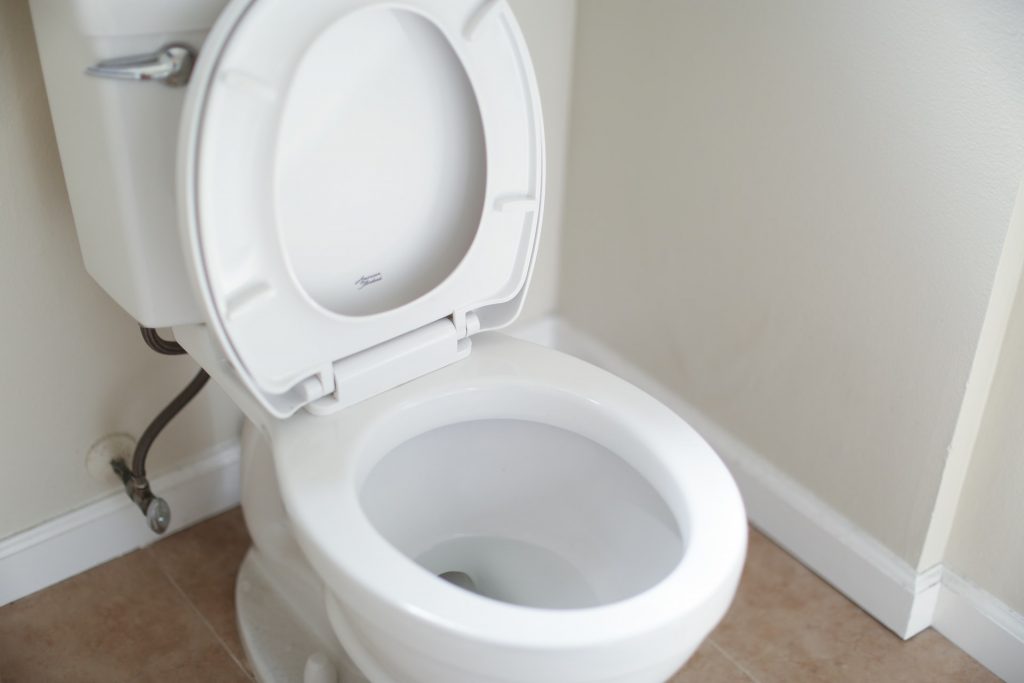Toilet leaks can be a real nuisance, especially when they occur at the base. If you’ve noticed water pooling around your toilet’s base every time you flush, it’s crucial to address the issue promptly. In this article, we’ll explore the four most common causes of a toilet leaking at the base and discuss how to diagnose, repair, and prevent this frustrating problem.
Contents
Identifying the Problem: Toilet Leaks When Flushed at Base
Before diving into the potential causes, let’s ensure you can identify the problem accurately. A toilet leak at the base typically becomes evident when you see water forming on the floor around the bottom of the toilet, especially after flushing. It’s essential to act swiftly to prevent further damage and mold growth.
Common Cause #1: Loose Bolts
One of the primary reasons for toilet leaks at the base is loose bolts. These bolts secure the toilet to the floor, and over time, they can become loose due to regular use. When they’re not properly tightened, water can seep out during each flush, causing puddles at the base.

Common Cause #2: Wax Ring Damage
The wax ring is a crucial component that seals the connection between the toilet and the floor drain. If this ring is damaged or deteriorating, it can no longer create a watertight seal. As a result, water may leak out from the base of the toilet.
Common Cause #3: Cracked Toilet Base
A cracked toilet base is a more serious issue that can lead to significant leaks. Cracks can develop due to various reasons, such as the toilet being dropped or accidents. These cracks allow water to escape and cause damage to your bathroom floor.

Common Cause #4: Faulty Flange
The flange is the part that connects the toilet to the sewage drain pipe. A broken or faulty flange can lead to leaks at the base of the toilet. It’s essential to inspect the flange for any issues if you’re experiencing leaks.
How to Diagnose a Leaking Toilet From Bottom
To accurately diagnose a leaking toilet from the bottom, you can perform a simple test. Clean up the water around the base and then flush the toilet. Watch closely to see if water starts to appear again. If it does, you likely have a base leak. This step helps confirm the problem before you proceed with repairs.
DIY Toilet Base Repair
If you’ve identified the cause of the leak and it’s a minor issue like loose bolts, you can attempt to fix it yourself. Here’s a step-by-step guide for a DIY toilet base repair:
- Turn Off the Water Supply: Before you start any repair, it’s essential to turn off the water supply to the toilet. You can usually find the shut-off valve located on the wall behind or beside the toilet. Turn it clockwise to shut off the water.
- Empty the Tank: Flush the toilet to empty the tank and remove as much water as possible. You can also use a small container to scoop out any remaining water in the bowl.
- Remove the Toilet: To access the bolts and wax ring, you’ll need to remove the toilet. Start by disconnecting the water supply line from the fill valve at the bottom of the tank. Then, carefully unscrew the nuts from the bolts securing the toilet to the floor. Gently lift the toilet and place it on its side.
- Inspect the Wax Ring: Check the condition of the wax ring. If it’s damaged, you’ll need to replace it. Remove the old wax ring and clean the flange, which is the pipe fitting on the floor.
- Replace the Wax Ring: Place a new wax ring on the flange, ensuring it’s centered properly. Gently press the toilet bowl back onto the wax ring. Make sure the toilet is level, and the bolts align with the holes in the base.
- Tighten the Bolts: Carefully tighten the nuts on the bolts, securing the toilet to the floor. Be cautious not to overtighten, as this could crack the toilet or damage the flange.
- Reconnect the Water: Reconnect the water supply line to the fill valve and turn on the water supply. Check for any leaks at the base. If there are no leaks, your DIY repair was successful.
- Flush and Test: Give it a test flush to ensure everything is working correctly. Watch for any signs of leaks around the base. If the problem persists, you might need to consult a professional plumber.
- Clean and Seal: After a successful repair, clean the area around the toilet base, and you may consider applying a bead of caulk to seal the joint between the toilet and the floor. This can help prevent future leaks and improve the appearance.
Remember that while a DIY repair can solve minor issues, if you’re dealing with more complex problems like a cracked toilet base or a faulty flange, it’s advisable to seek professional assistance. It’s always better to be safe and ensure the problem is fixed correctly to prevent further damage or recurrent leaks.
Seeking Professional Help
When you’re dealing with more complex issues like a cracked toilet base, a faulty flange, or if your DIY attempts haven’t resolved the problem, it’s time to seek professional assistance. Here’s what you need to know about getting the experts involved:

- Find a Qualified Plumber: Start by searching for a reputable and experienced plumber in your area. You can ask for recommendations from friends or family or read online reviews to find a professional with a solid track record in plumbing repairs.
- Detailed Inspection: Once you’ve selected a plumber, they will conduct a thorough inspection of your toilet and the area around the base. This inspection helps in identifying the precise cause of the leak and any underlying issues.
- Professional Diagnosis: With their expertise, plumbers can accurately diagnose the problem, whether it’s a cracked toilet base, a faulty flange, or other complex issues. They have the knowledge and specialised tools to assess the situation.
- Repairs Done Right: Professional plumbers are well-equipped to handle intricate repairs. They’ll use the necessary materials and techniques to ensure a lasting and watertight fix. This not only solves the issue but also prevents it from recurring in the near future.
- Preventative Measures: A good plumber will also offer advice on preventing future leaks around the base. They can recommend regular maintenance practices and provide insights into toilet care to extend its lifespan.
- Warranty and Guarantee: Reputable plumbers typically offer warranties or guarantees on their work. This gives you peace of mind, knowing that if an issue does resurface shortly after the repair, they will address it at no additional cost.
- Cost Considerations: The cost of professional plumbing services may vary depending on the complexity of the issue, the location, and the plumber’s rates. It’s essential to get a detailed estimate before proceeding with the repair.
- Timely Action: Don’t delay in seeking professional help if you suspect a severe problem. The longer you wait, the more extensive the damage can become, leading to more costly repairs in the future.
By seeking professional assistance, you ensure that the issue is handled by experts who can deliver a lasting solution, saving you from potential water damage and the inconvenience of recurrent leaks. So, if you’re dealing with a troublesome toilet base leak that DIY methods can’t fix, don’t hesitate to contact a skilled plumber to resolve the problem effectively.
Preventing Future Leaks Around Base When Flushed
To avoid future leaks at the base of your toilet, consider the following preventive measures:
- Regularly check and tighten the toilet bolts to ensure they’re secure.
- Inspect the wax ring and replace it if it shows signs of wear or damage.
- Be cautious when moving heavy objects in the bathroom to prevent accidental cracks in the toilet base.
- Schedule periodic plumbing inspections to catch and address potential issues before they become major problems.
Stop Toilet Base Leaks Today!
Toilet base leaks can be a frustrating issue, but the good news is that you can take action to prevent and resolve them. Here are some essential steps to help you put an end to toilet base leaks:
- Regular Inspection: Make it a habit to inspect your toilet regularly. Check for any signs of water around the base, loose bolts, or damage to the wax ring.
- Tighten Loose Bolts: If you notice loose bolts during your inspection, tighten them promptly. Ensure that the toilet is securely fastened to the floor.
- Wax Ring Maintenance: The wax ring is critical to preventing leaks. If it’s damaged or worn, replace it as soon as possible to maintain a proper seal.
- Avoid Heavy Pressure: Be cautious when moving heavy objects in the bathroom, as they can lead to cracks in the toilet base. Preventing physical damage is a key step in leak prevention.
- Plumbing Checkup: Schedule regular plumbing inspections with a professional to catch and address potential issues before they become significant problems.
- Professional Assistance: If you suspect a severe issue or your DIY attempts haven’t resolved the problem, don’t hesitate to seek the expertise of a qualified plumber.
- Caulk the Base: After making repairs, you may consider applying a bead of caulk around the base of the toilet. This can help create an additional barrier against leaks.
- Regular Maintenance: Lastly, ongoing toilet maintenance is crucial. Keep an eye on the condition of your toilet and address any issues promptly to prevent base leaks in the future.
By following these steps, you can stop toilet base leaks and ensure that your bathroom remains dry and free from the inconvenience of water pooling around the toilet’s base. Don’t wait – take action today to address and prevent toilet base leaks effectively.
FAQ about possible causes of toilet leaks on base
Common causes of toilet leaks at the base include loose bolts, wax ring damage, cracked toilet bases, and faulty flanges.
To check for wax ring damage, look for water seeping out from the base of the toilet. If you notice this, it’s likely that the wax ring needs replacement.
Repairing a cracked toilet base is possible but often requires professional assistance. It’s best to call a plumber to assess the severity of the damage and perform the necessary repairs.









